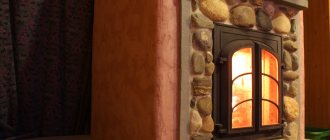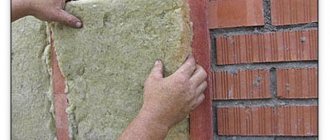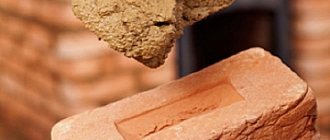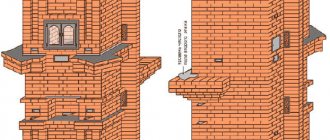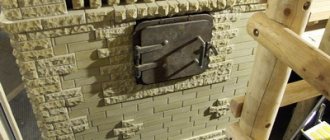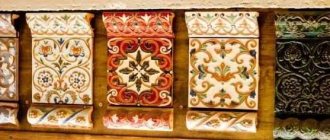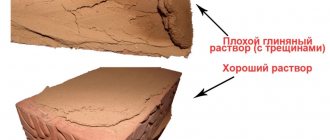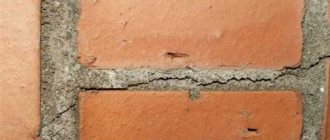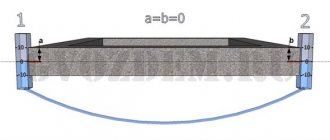Clay additives for bricks
Clay additives for bricks
To improve the natural properties of clay raw materials - reducing overall shrinkage, sensitivity to drying and firing, improving molding properties - additives are widely used.
Additives used in the production of bricks and ceramic stones can be divided into:
wasteful - sand, fireclay, dehydrated clay, expanded clay production waste and other mineral non-burning additives;
thinning and burning out completely or partially - sawdust, peat, lignin, husks, polyash coals, slags, thermal power plant ashes, coal-containing waste from processing plants, etc.;
burnable additives in the form of high-calorie fuel - anthracite, coke and others, introduced into the charge to improve the firing of products;
enriching and plasticizing additives - highly plastic fatty clays, bentonite, sulfite-alcohol stillage (SSB), etc.
Leaning Supplements
Sand. Quartz sand should be used as a thinning agent. Sands of carbonate rock or contaminated with carbonate are not permitted.
It is necessary to use coarse sand. Fine-grained ones almost do not reduce the shrinkage and sensitivity of the product during drying and at the same time reduce the strength of the product.
The grain composition of sand most suitable for fattening is from 1.5 to 0.15 mm.
Chamotte. Fireclay is obtained from fired ceramic waste. It is a more effective detoxifying agent than quartz sand. Fireclay reduces the shrinkage of clay more strongly than many other thinning agents, and reduces the strength of brick less than others. Therefore, when it is necessary to ensure sufficient strength of the brick, fireclay is used.
Usually 10-15% chamotte is added to the charge. If this amount is increased, then the moldability of clays with insufficient plasticity decreases. However, when evacuating the clay mass and molding bricks on vacuum presses, the amount of fireclay in the charge can be increased to 25% or more.
Chamotte can be easily crushed to the required grain composition, which should be in the range of 1.5–0.15 mm. If fireclay obtained from waste is not enough for the required thinning of clay, then it is introduced in combination with other types of lean and burnable additives (slag, sawdust).
Dehydrated clay. This clay is clay fired to 500-600°, from which a significant part of the chemically bound water has been removed. Thanks to this, dehydrated clay dramatically reduces brick shrinkage, ductility and sensitivity to drying. The drying process of bricks molded with the addition of a significant amount of dehydrated clay can be carried out more rapidly without fear of the formation of shrinkage cracks. Dehydrated clay can be added within 30-50% of the total volume of the charge. With this amount, the number of cracks in ceramic bricks sharply decreases or they are completely eliminated.
When adding dehydrated clay, coal should also be added to the mixture, and the products should be fired at a slightly higher temperature (40-50°) than usual.
The optimal amount of dehydrated clay in the charge depends on the properties of the starting raw material, the degree of dehydration of the clay, the conditions for molding the products and their type, and is usually established when testing the raw materials in the factory.
The degree of grinding of dehydrated clay significantly affects the drying properties and strength of dry and fired products. Recommended grain composition of crushed dehydrated clay in mm: 2-1 -20-30%; 1-0.63— 15-60%; 0.63-0.31 - 15-20%; 0.31-0.15 - 25% and less than 0.15-20 - 30%.
Additives that are lean and burn out completely or partially
Wood sawdust. Sawdust is used for longitudinal and transverse cutting. However, preference should be given to slitting sawdust. Before use, sawdust must be sifted through a screen with a mesh of cells no larger than 8X8 mm. Since sawdust is long-fiber, it reinforces the clay mass and increases its tensile strength, and at the same time its crack resistance during drying. Sawdust improves the molding properties of the clay mass, but reduces the strength of one-and-a-half bricks and increases water absorption.
The use of sawdust in the production of solid and hollow bricks reduces the volumetric weight of the brick and, accordingly, improves its heat-shielding properties.
In some cases, the addition of 5-10% sawdust increases the frost resistance of bricks and stones. With a significant amount of sawdust in the mixture, the appearance of the products deteriorates.
The greatest effect from using sawdust as an additive is obtained when it is introduced in combination with mineral scourers, for example fireclay, as well as coal.
Lignin. Lignin is a waste product from the production of wood alcohol and is not only a lean and burnable additive, but also acts as a plasticizer.
The use of lignin as an additive to silty loams that are sensitive to drying improves their molding properties and reduces the cracking of products during drying; As a burn-out additive, lignin improves the quality of firing.
Lignin is added from 6 to 20% of the volume of the ceramic mass. To obtain porous bricks, the amount can reach up to 40%.
Peat
Crushed (milled) peat and peat briquette waste, in the absence of other clearing agents, can serve as an additive to clay in the production of porous lightweight bricks. However, peat slows down drying due to its high moisture holding capacity.
Furnace slag. These slags are an effective leaning additive; This especially applies to the vitrified part. Slags reduce the sensitivity of brick production products to rapid drying.
The quality of firing is significantly improved and cracks are eliminated during drying with the addition of high-calorie slags in combination with a small amount of sawdust (up to 8%).
CHP ash. Ashes from thermal power plants are waste from the combustion of coal in a pulverized state. The resulting ash and slag are directed from boiler houses of thermal power plants by a hydraulic system to ash dumps in the form of pulp. In brick production, thermal power plant ash with a specific surface of 2000–3000 cm2/g is used as an additive. The calorific value of thermal power plant ash is from 1000 to 3200 kcal/kg.
The addition of 10-15% ash from a thermal power plant mixed with sawdust or fireclay makes the brick less sensitive to drying and increases its strength compared to the addition of, for example, crushed polyash coal or sawdust alone. This is due to the fact that pre-mixing with other additives ensures a more uniform distribution of ash and its finely dispersed combustible part in the charge.
From 15 to 45% of thermal power plant ash is added to the mixture.
Waste from coal preparation plants. This waste is obtained after the enrichment of various coals. They are clayey and other rocks with a combustible content of 10-30% or more, characterized by a high calorific value.
The moisture content of coal-containing rocks is 10-12% or more, the size of pieces of non-sticky rock is from 6 to 100 mm and the ash content is on average 70%. There are rocks with a high alumina content and contaminated with coal, which are used as depleting and also enriching additives in brick loams with a low alumina content.
The addition of carbon-containing waste increases the sintering interval of low-melting clays and the strength of products.
Burn-out additives
This group includes various types of solid fuel, in particular anthracite, coke breeze, etc. They are added to the mixture up to 3% by volume, i.e., up to 60-80% of the total fuel requirement for firing products. Their purpose is to intensify the firing process, improve the sinterability of the mass and thereby increase the strength of the products. It is preferable to introduce burn-out additives in a dusty state.
Enrichment and plasticizing additives
To enrich low-alumina raw materials (with an alumina content of 6-8%) and increase its plasticity, more plastic clay with a higher alumina content is used as an additive in an amount of 10-20% or more of the total composition of the charge.
To better mix the two types of raw materials and reduce the amount of added more plastic clay, it is recommended to add it in the form of a slip with a moisture content of approximately 40%.
Enrichment and plasticizing additives should be introduced at the beginning of the production line whenever possible.
If the quarry moisture content of the clay does not allow the introduction of clay in the form of a slip, then along with it, the mixture should contain water-reducing additives, i.e., commonly used chips - fireclay, slag, dehydrated clay, or ground waste products after drying. Betopite clays, introduced in the form of a slip, are an excellent plasticizer.
Extracts from straw and peat, which are introduced into the clay mass during mixing along with ordinary water, can also serve as plasticizing materials.
If the clay is mixed with a decoction of straw or an extract from peat, then the plasticity of the clay, especially if it is aged for some time, more than doubles, and the strength of the molded products also increases.
The additive can be widely used in numerous small brick and tile enterprises in agricultural areas with low-plasticity raw materials.
To prepare straw extract, the straw is first converted into chaff by machine, loaded into a container with water and boiled for 15 minutes. Straw chaff is taken at the rate of 1.0–1.5 kg per 10 liters of water. The clay mass is mixed with the resulting decoction, diluted in half with water.
Straw extract can also be prepared in cold water with NaOH added to it until a 1% solution is obtained.
One of the plasticizing surfactants that improves the molding properties of the clay mass can be sulfite-alcohol vinasse (SAL), which is a waste product of cellulose production. The SSB solution has adhesive properties, as it contains sugary and resinous substances. A 1% solution of SSB, introduced into the clay mass, reduces its molding moisture content and reduces the number of cracks in the raw material during drying, and increases the strength of the brick by 25-40 kg/cm2.
Concrete additives and their characteristics
Admixtures are liquid or powdered substances or elements that are added to concrete. They, due to chemical and/or physical effects, affect the properties of concrete.
Depending on the type of additive used, both the properties of fresh concrete, for example, hardening characteristics and spreadability, and the properties of hardened concrete, for example, strength and durability, can be purposefully changed.
What specific problems can the use of additives solve?
The first problem that builders faced when switching to monolithic housing construction was the problem of delivering concrete from the manufacturer to the consumer while maintaining the necessary qualities. First of all, it is maintaining mobility, allowing the pump to pump concrete to the second, third, or even fourth floor.
To lift concrete to such a height, high-performance concrete pumps began to be used. And this is the second problem.
The third problem is that a day or two after you have laid the concrete, you can already remove the formwork. If concrete hardens slowly, then the amount of formwork used must be increased in proportion to the lengthening of the concrete hardening time, which significantly increases the cost of construction. Naturally, in such a short period of time, concrete cannot physically harden completely, but it must have time to gain the required level of strength.
The fourth problem is that the concrete that goes into monolithic house construction must be laid using vibration-free technology. Because in most cases it is physically impossible to handle it with a vibrator, because... There is nowhere to put this very vibrator.
So, all of the above problems can be solved by introducing special additives into concrete.
In addition to the problems already listed, additives allow us to solve a number of other issues that often arise among builders. For example, the problem of winter construction (after all, construction is now done both in winter and in summer). It is necessary to bring the concrete to the construction site, lay it, and ensure that it does not freeze. And in winter the concrete gets cold just before our eyes. Already in the mixer, the temperature of the concrete drops by 6-7°, and if it is loaded at a temperature of +15°, then it arrives at the construction site with a temperature of +7+8°. And then, after unloading, it goes to the place of laying along a cold tray and then lies on a cold base. The task is to ensure that at the moment of contact and further during hardening it does not freeze. For this case, a special additive has been created based on salts of organic acids, which reduces the freezing point of water to -30°. Of course, at negative temperatures, the rate of hydration reaction in concrete decreases, and it does not gain strength as quickly as in warm weather, but, as required by GOST, it will gain 30% of its brand strength in 28 days. This means that the supplement fully copes with its task.
Another task is to improve the properties of masonry mortars for bricks. The cement masonry mortar should not freeze and subsequently no efflorescence should appear on the surface of the brick. Using a special additive to prevent the solution from freezing is not a new idea. For example, sodium nitrite and calcium chloride additives have been used for quite some time. A new series of additives has now been developed, the principle of action of which is based on lowering the freezing point of water. These additives differ in that they are needed 2.5 times less than the same sodium nitrite, and, in addition, they prevent the appearance of efflorescence on the surface of the brick.
Modern concrete technology is heavily focused on the use of concrete additives. Thus, numerous properties of concrete cannot be achieved without concrete additives, and many construction problems can only be solved by using them. In accordance with this, additives are used in 80% - 90% of all industrially produced types of concrete in the world.
Clay quality analysis
Scheme for determining the quality of clay.
Before importing clay, you need to check how fat it is. This can be done in one of the following ways. The simplest test option is to use 0.5 liters of clay, to which you need to add water while stirring. It is necessary to continue until the clay absorbs all the liquid and stops sticking to the palms. From the resulting solution, you should form a small ball, the diameter of which is approximately 5 cm; you should also prepare a cake Ø10 cm. The figures should be placed in the shade, leaving for 3 days.
Then you can check how durable they are and whether there are cracks on their surface. If the latter is confirmed, sand must be added to the clay, since it is excessively greasy. If there are no cracks, the figurine must be thrown, raised 1 m. The ball will not be damaged if the clay has optimal fat content. If it is excessively thin, then cracks will not form on the surface of the figurine, however, the strength will not be high. To obtain suitable clay fat content, you need to mix sand, doing this gradually. Once the clay has the desired characteristics, it can be used for the production process.
Technology for making clay products
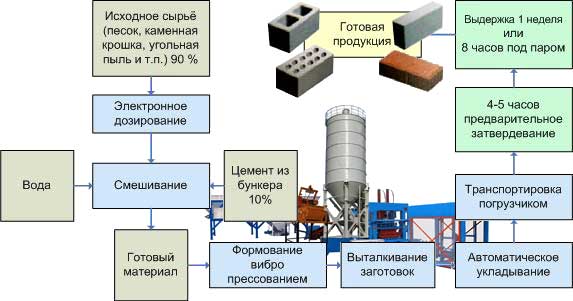
Technological diagram for the production of bricks.
In order to make bricks from clay, which will be raw, you first need to moisten the mold from the inside, then sprinkle it with cement, which will make it easier to remove the products. The clay composition must be poured into molds, which must then be shaken well. This will distribute the dough into the corners. Excess clay must be removed with a steel plate or trowel. A removable cover should be placed on top. After the solution has matured, the mold must be turned over.
During the drying process, the material shrinks up to 15%. It is better to dry products on a rack that has a canopy. This will prevent the sun from hitting the bricks. This stage will take from 6 to 15 days. The ripening period will be influenced by the air temperature: the higher it is, the shorter the drying period will be. After completing this stage, the brick can be considered ready. If it is necessary to obtain a fired product, the next step is to carry out firing. Due to the fact that this is a difficult task, it should not be undertaken if there is a need for a large amount of fired material. But if there is a need for 50 fired bricks to complete construction, then firing makes rational sense.
Raw firing technology

Scheme of firing bricks in an industrial kiln.
It is necessary to lay the brick in the barrel, ensuring small gaps for high-quality heating. Due to the fact that you do not have an industrial furnace, such work can be done using an ordinary barrel, the volume of which should be 250 liters.
Initially, you need to prepare a pit for a fire, the depth of which is 50 cm. The barrel must be deprived of the bottom, placing it on the fire on legs, the length of which is limited to 20 cm. This will make it more comfortable to maintain and regulate the fire, while the heating of the clay brick will be uniform.
After laying clay-based bricks in a barrel, it must be covered with a steel sheet, for which it is permissible to use the extracted bottom. This stage will take a period of 18-20 hours, during which time the fire must be maintained. Afterwards, the barrel should be left to cool; there is no need to open the lid. The fire should be reduced gradually. 5 hours after the barrel and bricks have cooled, the finished products can be removed.

Tools for making bricks: 1 – pound, 2 – flooring, 3 – sand with a shovel, 4 – clay with a shovel, 5 – a hammer, 6 – a staple or scraper.
Clay products may contain ingredients added and mixed in different proportions. Thus, to obtain adobe, you must first prepare a large container that has low sides. This container is convenient for mixing the mixture. To mix, you need to use a combination of two types of clay, one of which is lean, the other fatty. The composition should also contain straw, the final proportion is as follows: 1:1:5. You need to add water to the mentioned components, and then mix with a shovel. If you decide to use the specified recipe for bricks, then before starting work the straw will have to be crushed. If this requirement is neglected, the lumps will cause a decrease in the strength characteristics of the brick. It is preferable to use wheat stalks that have undergone high-quality drying.
If desired, when producing independently, products based on clay can be given dimensions that differ from the standard dimensions.
The waterproof characteristics of bricks, which contain unfired clay, are not too high, for this reason, if the products form the basis of external walls, they must be protected from moisture. To do this, the length of the roof overhangs should not be less than 60 cm, in addition, the seams must be carefully bandaged. Openings should be located no closer than 1.5 m from the corners. Once the walls are in place and the house is settled, the surface of the walls will need to be plastered, and siding can be used as an alternative solution for protection.
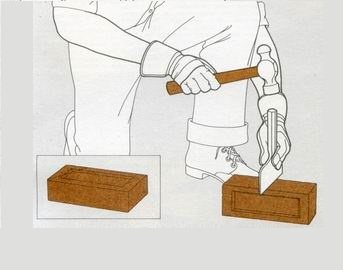
Scheme for checking the quality of bricks by splitting them.
If you decide to make bricks, the composition of which is devoid of straw, then instead of it you need to add a small amount of sand to the solution. The proportion remains the same. It is preferable to use fine-grained pure quartz sand for this.
After firing, you need to analyze the size and correctness of the shape of the brick, as well as its quality. To analyze the quality characteristics, one product needs to be split with a hammer. With good firing, the color of the product will be the same, which also applies to the structure along the entire fault. The brick test is not over yet. The battle still needs to be filled with water and left for a while. If the material is well fired, then the color and structure will be the same over the entire surface.
Thus, ceramic bricks can be made independently, without having a press or other complex industrial equipment.
Shapes and sizes of red brick

Dimensions of red brick.
Decorative brick can be used to cover a house, but red brick can be used for arranging the foundations of houses, walls and partitions, installing stoves and fences. This material today has earned the status of the most universal. If a product based on clay is fired with high quality, then when struck lightly it produces a ringing sound. If the product is over-burned, its core will be black and the edges will be melted. Such products, despite the correct dimensions, cannot be used in construction, with the exception of arranging foundations. According to standards, if a red brick has classic dimensions, then its weight varies between 3.5-3.8 kg.
The above size of ordinary red brick is considered optimal for alternating the transverse and longitudinal arrangement of products relative to the axis of the masonry.
Today you can buy a brick that has a different size: length 250, width 120, height 88 mm, this product is called one-and-a-half and is used when making lightweight masonry.
There is also a double brick, which has a size of 250x120x103 mm; such products are almost never solid, but are used in lightweight masonry. For your own production, you can choose your own brick size, which will depend on the purpose of the product.
Brick mold
In order for the brick to have standard dimensions, it is preferable to make a mold whose dimensions are 250x120x65 mm.
Scheme of a homemade brick mold.
At the base of the boxes there should be bars that need to be secured with nails.
The raw material is represented by unfired bricks, made independently from high-quality clay. Such products are dried according to the rules, this makes it possible to obtain a brick that is slightly different from a fired one. It can be used in the construction of oversized outbuildings such as bathhouses.
It is not advisable to use a press that is involved in industrial flow production when making bricks, since the home craftsman has no goal of establishing mass production. To produce clay products, you can use a simple mold.
